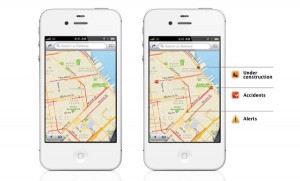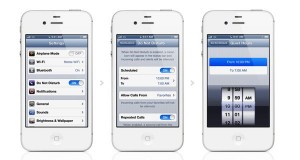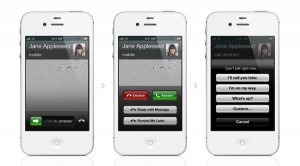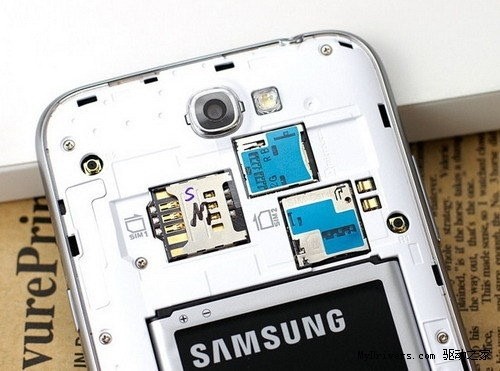What would you do if you misplace your mobile phone, or worse still, had it stolen? Would you even know where to start to get it back, and what about all that personal data that is linked to your phone?
If this has ever happened to you, you know what a nightmare it can be. Although there are some good Samaritans in the world, more than likely they’re not going to be the ones who would steal your mobile device.
So what can you do to minimize the effects of a stolen smartphone? You can start by installing some form of security for your device. With all of the mobile apps readily available for use (and many for free), there’s really no excuse for not giving your phone ample protection. Even for apps that aren’t free, it’s worth paying that small fee in order to give your smartphone and the details it contain the security it needs.
Let’s take a look at some of the best tools available for protecting your smartphone.
1. Lookout Mobile Security
Lookout is a free app that protects your iOS or Android device around the clock from mobile threats such as unsecure WiFi networks, malicious apps, fraudulent links, etc. You can also use it to backup your contacts by scheduling automatic backups and then accessing the information online, or using it to restore your device in case of a crash or data loss.If you lose your phone, Lookout can locate it on a Google map – even if the GPS is off. It will also activate a loud alarm – even if your phone is on silent.

2. Snap Secure Mobile Security
Snap Secure will securely and automatically back up your data to your online account so that you can access it, restore or transfer data to a new device if needed. It comes with anti-virus and anti-spyware protection, and will scan all of your new applications for malware.It also includes a call-blocking feature that lets you block calls from unknown or unshown numbers. You can even block unwanted emails on your BlackBerry device, and block unwanted SMS messages on Android devices.

Snap Secure is available for iOS, Android, and BlackBerry devices. There are both free and Pro versions. Most of the better features are only available with a Pro account, but you’ll get a 30-day free trial of Snap Secure Pro with the free version. The Pro version is $3.99/month or $17.99/year.
3. BullGuard Mobile Security 10
With BullGuard you get an online account that lets you remotely access your smartphone, along with a Mobile Security Manager that works with your device’s GPS. If you lose your device, you can lock it remotely and wipe it clean.It also includes a Parental Control module so that you can keep your kids protected without having direct access to the phone. It includes anti-virus and anti-spyware, firewall, spam filter, backup/restore feature for contacts, and SIM card protection.

4. iHound Phone and Family Tracking
iHound is great for families and includes various tracking tools, yet it is also a great tool for protecting your device. iHound can use your phone’s GPS to track your device and report its location. It includes an alarm that can be set off via a push notification and heard even when the device is silent. If you use this on an Android device, you can also remotely wipe your data and lock your device.iHound can also protect you with the unique geofencing feature that automatically checks you in on Facebook or Twitter when you arrive at your destination.

5. McAfee WaveSecure
McAfee has also created an excellent mobile security application for iOS, Android, BlackBerry, Symbian OS, Windows phone, and Java. It includes all of the same features as the rest: remote wiping and locking; backup and restoring of data; and location and SIM tracking. With WaveSecure, not only can you backup your contacts, but you can also backup photos and videos.
McAfee WaveSecure is available for all devices at $19.99/year.
6. Kaspersky Mobile Security 9
Kaspersky Mobile
Kaspersky Mobile is currently on sale for $9.95/year (regular $29.95) or $29.95/2 years (regular $59.90). If you want to try before buying, there is a 7-day free trial.
7. F-Secure Mobile Security
If you’re using an Android, Symbian, or Windows mobile device, you may want to try out F-Secure. It offers the basics such as protection against viruses and malware, parental controls, safe browsing, identity protection, location tracking, and call/SMS blocking.
8. Norton Mobile Security Lite
Here we have Norton, another well-known anti-virus provider. Norton Mobile is unfortunately only available for Android devices. It protects you against unauthorized access, viruses, malware, phishing, and theft. If your device is stolen, you will be able to locate it, wipe the data within, and lock it remotely.Even when you’re browsing the Web, you’re being protected with a privacy guard. If your device is compromised, it will detect and eliminate the threat. All apps will also be scanned to make sure they’re not malicious. Calls and SMS messages can be blocked as well.

A very similar Android-only mobile security app you might like is by Trend Micro. It offers all of the same features as Norton Mobile and comes with a 30-day free trial, after which it’s $17.99/year.
I’ll throw AVG for Android in here as well. Along with all of the same features, it also helps to enhance the performance of your device by identifying applications that may be slowing it down. AVG for Android is also free.
9. Avast! Mobile Security
Avast! Mobile is yet another Android-only application, but I wanted to address it in more detail because of the many features it offers – all for free. When compared to the other free and paid mobile security options, Avast! delivers the same features and more.It has real-time protection, customizable updates, privacy reports, a Web shield, call and SMS message filtering, a firewall and application manager. If your device is stolen, you can do everything except access or restore your contacts – because it doesn’t include a backup feature. Yet, you can locate your device and wipe or lock it remotely, set off an alarm, and even receive a notification if your SIM card is changed.

10. GadgetTrak
Lastly we have GadgetTrack, an app only for iOS devices that not only tracks your stolen device, but takes a snapshot of the thief! If your device doesn’t have a camera, you can still use it to create tracking reports with and give you coordinates for your missing device.
GadgetTrack is available in the App Store for $3.99.
11. VirusBarrier
iOS users, if you’re looking for something only for your device, check out VirusBarrier. This app is $2.99 and can be used to scan email attachments and other files as needed. It checks for spyware, trojans, adware, hacker tools, dialers, keyloggers, and more. VirusBarrier even works with remote services like DropBox, iDisk, and WebDAV.
12. Webroot SecureWeb
Here we go, iOS users, an application that you can use too! Webroot SecureWeb is available for iOS and Android, and mainly focuses on securing your Web browsing experience. On the iOS app you can browse using the integrated and secure tabbed browser and safe search feature, which identifies phishing and malicious websites. There are no anti-theft features included, unlike the Android version.







 A6
A6 




